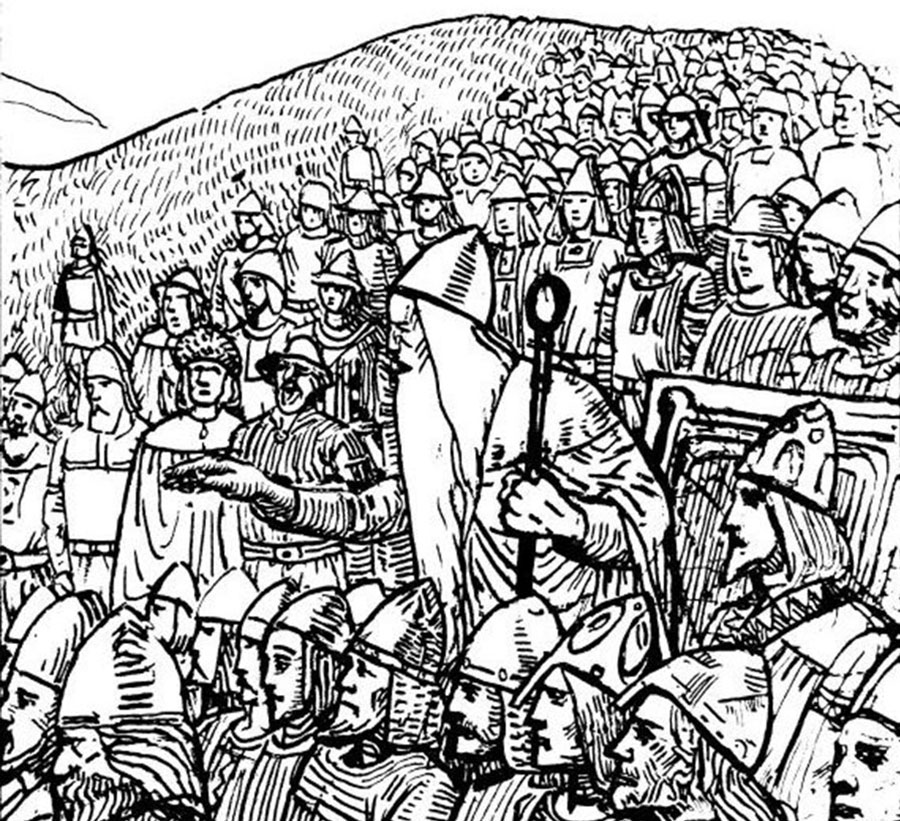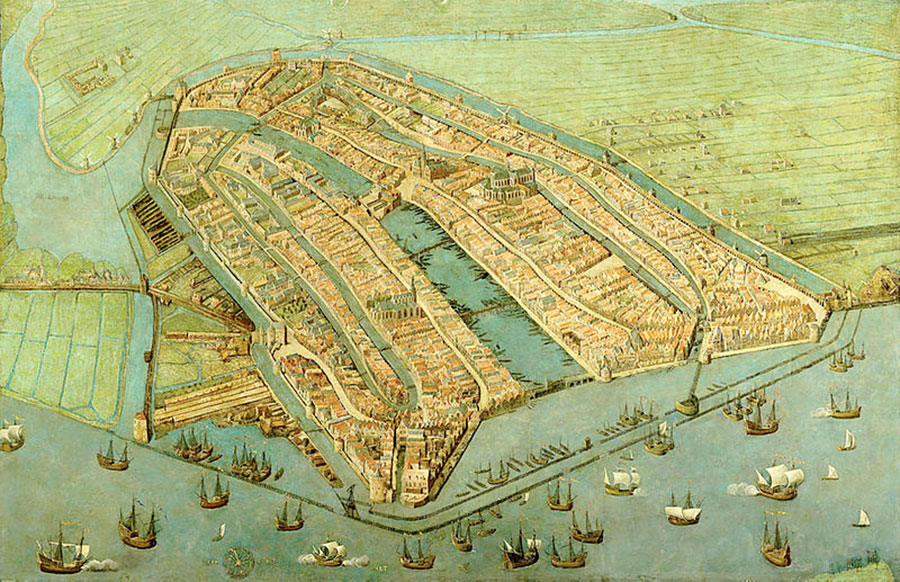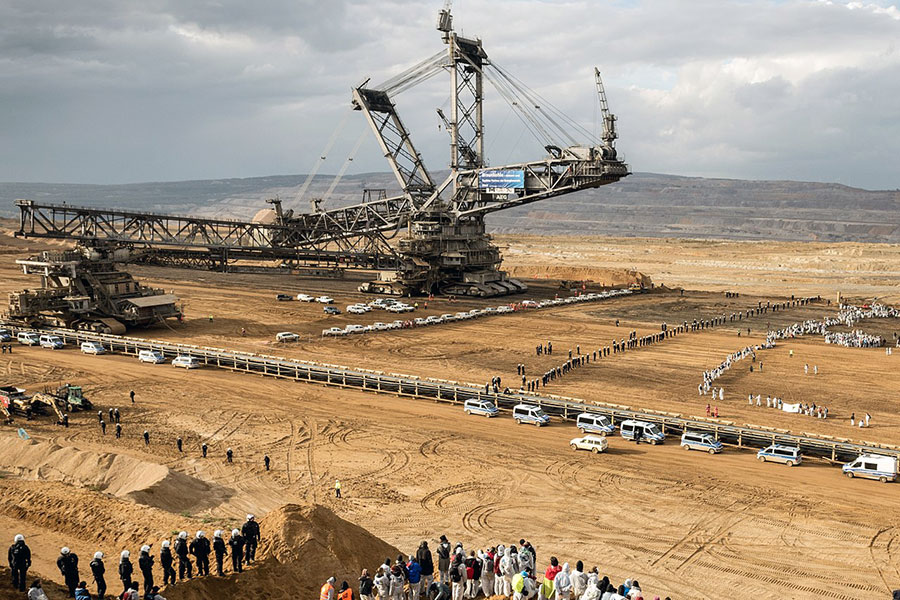Week 1 | Week 2 | Week 3 | Week 4 | Week 5
5.5

Þorgnýr the lawspeaker at The ‘Ting’ (council) of all Swedes – the governing assembly held from pre-historic times to the Middle Ages – in 1018 at Gamla Uppsala, Sweden. The drawing by C. Krogh (1899) depicts the lawspeaker reminding the Swedish king Olof Skötkonung that the power resides with the people (cropped).
Change on a local, regional, national and international level
As we get closer to your own climate change leadership plan and the end of the course, we want to bring to your attention change-making at different levels of institutions. In this section, we look at several projects that have brought or are bringing about change at the local, regional, national, and international level.
Institutional theory analyzes how institutions change over time. Institutions have an impact on the type and degree of change across different levels and contexts, and at the same time are also in themselves changing in character, behavior, and efficacy over time and space [1]. When discussing change, it is also essential to discuss asymmetric power structures and different degrees of influence and accessibility of various stakeholders [2]. The speed of change is another factor to consider. While often abrupt and sudden transformation are the most visible, it can be helpful to consider the more subtle and gradual ways in which institutions can and have changed over time[3].
With this in mind, we can look at several initiatives that are tackling institutional change at different levels.
Transition Network: local communities responding to climate change
Transition is a movement of community-led groups that work for “a low-carbon, socially just future with resilient communities, more active participation in society, and caring culture focused on supporting each other” [4]
Klimabudjett and Koldiokidbudget: local implementations of carbon budgets
Several municipalities have started to work with carbon budgets to frame their climate work. Here we have examples from Sweden (in the report from 2018 by the Climate Change Leadership Node) and Norway (see video below from the Climate Budget conference 2022 at Uppsala University), read more at the project page.
The Amsterdam City Doughnut: transformation for thriving sustainability
The Doughnut is a sustainability framework developed by economist Kate Raworth. Her model “points towards a future that can provide for every person’s needs while safeguarding the living world on which we all depend” [6]. In 2020, the city of Amsterdam has published their doughnut ‘portrait‘, where they adopt social, ecological, local, and global lenses to map out the opportunities for transformation.

Bird’s-eye view of Amsterdam by Cornelis Anthonisz (1538). Oldest known surviving map of Amsterdam, at the Amsterdam Museum.
Fossil Fuel Non-Proliferation Treaty: the call for a global phase-out of fossil fuels
The Fossil Fuel Non-Proliferation Treaty is a trans-national initiative that has been endorsed by national governments (Vanuatu and Tuvalu), international institutions (the European Parliament, the World Health Organization), cities and sub national governments across all continents, as well as academics, scientists, civil society actors, and activists. The initiative calls for a complementary agreement to the Paris agreement, as it has failed to address the root problem of climate change, the production and consumption of fossil fuels.

Ende Gelände 2017, police line and line of activists, in the background a stopped coal bucket-wheel excavator of RWE, by Christian Bock 2017, CC-BY 2.0.
References
1. Coccia, M. (2018). “An introduction to the theories of institutional change“, in Journal of Economics Library, 5(4), pp. 337-344.
2. Poole, M. S., and Van de Ven, A. H. (2021). The Oxford handbook of organizational change and innovation. Oxford: Oxford University Press.
3. Mahoney, J. and Thelen, K. (2009). A theory of gradual institutional change, in Mahoney, J. and Thelen, K. eds. (2009). Explaining institutional change: ambiguity, agency, and power. Cambridge: Cambridge University Press.
4. Transition Network. (n.d). What is Transition? Available at: https://transitionnetwork.org/about-the-movement/what-is-transition/. Accessed 15 December 2022.
5. Anderson, K., Schrage, J., Stoddard, I., and Tuckey, A. (2018) A guide for a fair implementation of the Paris Agreement within Swedish municipalities and regional governments: part II of the Carbon Budgets reports submitted to the Swedish local governing bodies in the 2018 project ‘Koldioxidbudgetar 2020-2040’.
6. Raworth, K. (2017). Doughnut economics: seven ways to think like a 21st-century economist. London: Random House Business Books.
© CEMUS and Uppsala University
